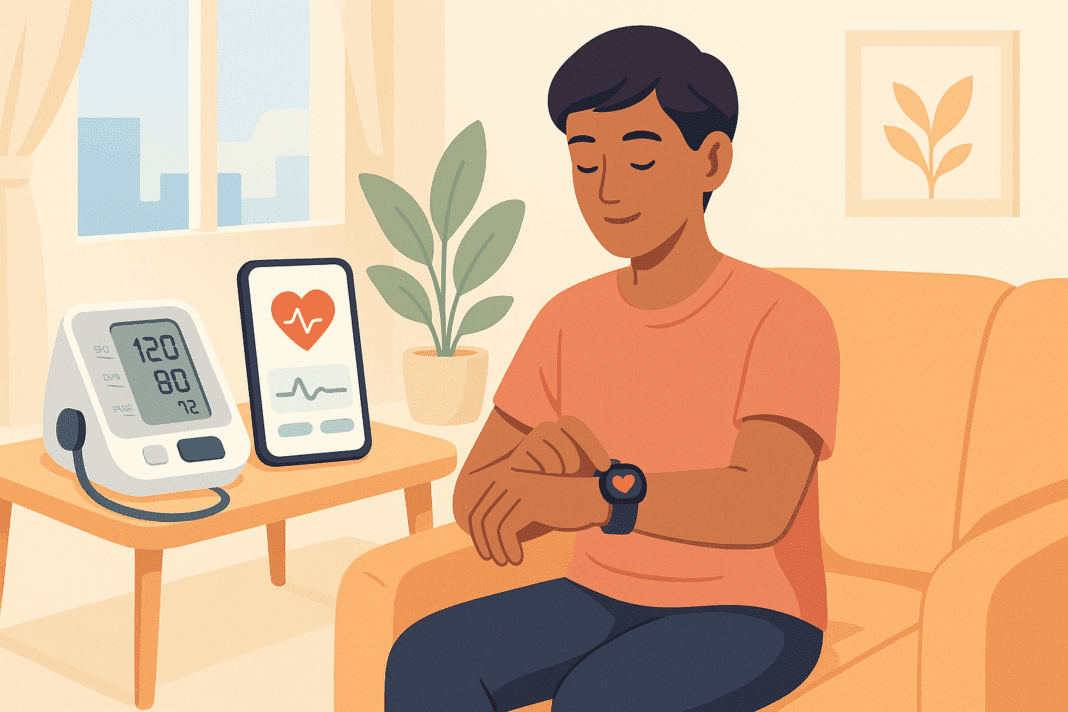Introduction: Why At-Home Heart Health Monitoring Matters
Heart disease remains the leading cause of death worldwide, but early detection can significantly reduce risk and improve outcomes. With the advancement of consumer-friendly technology and growing awareness of preventative care, more people are asking how to check heart health at home in ways that are safe, smart, and evidence-based. Home monitoring not only provides real-time data but also empowers individuals to recognize patterns, spot early warning signs, and take meaningful steps toward improving cardiovascular fitness. From smartwatches to self-assessment routines, the tools available today allow for a proactive, holistic approach to heart care—without leaving your home.
You may also like: Smart Nutrition Choices for a Healthier Lifestyle: What to Know About Whole Grain Rice and Whole Wheat Rice
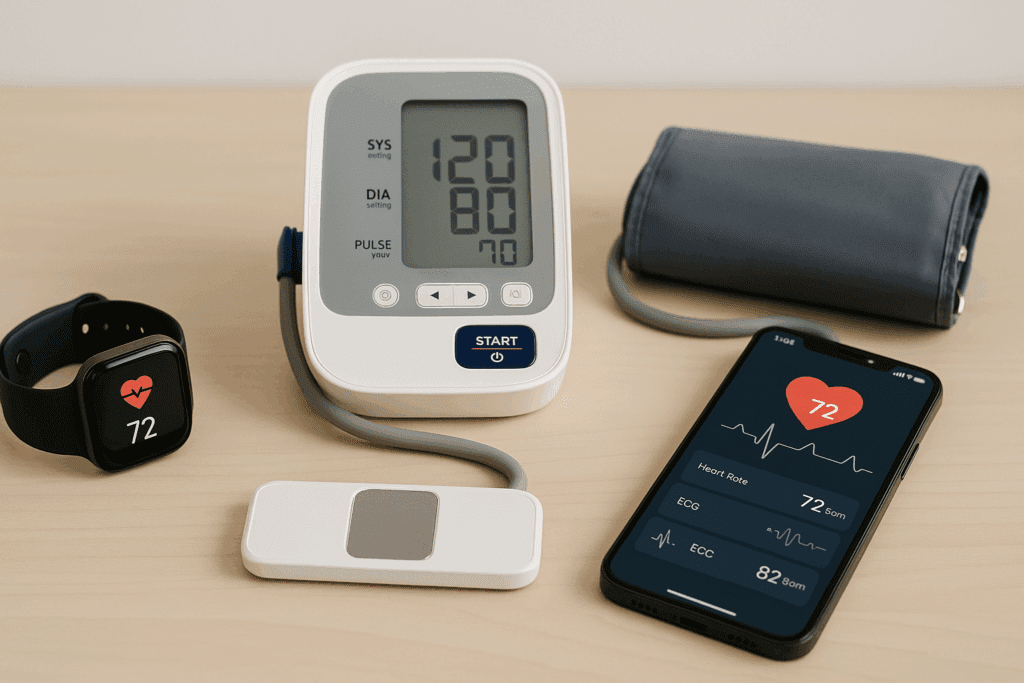
The Rise of Smart Heart Health Devices and Digital Self-Monitoring
The modern age has ushered in a wave of innovations that make it easier than ever to monitor key heart health indicators from the comfort of home. Devices like smartwatches, wearable ECG monitors, and connected blood pressure cuffs offer powerful insights into your cardiovascular system. These tools track real-time data such as resting heart rate, heart rate variability (HRV), blood pressure, and even potential arrhythmias. Understanding how to check for heart disease at home often begins with leveraging these technologies, which provide both convenience and medical-grade accuracy when used properly.
Many of these tools now integrate artificial intelligence to flag concerning patterns such as atrial fibrillation or sudden spikes in heart rate. When paired with mobile apps, users can generate reports to share with their healthcare providers. This continuous loop of feedback strengthens early detection and allows for earlier lifestyle changes or clinical interventions. While not a replacement for professional care, these technologies bridge the gap between annual checkups and everyday health awareness.
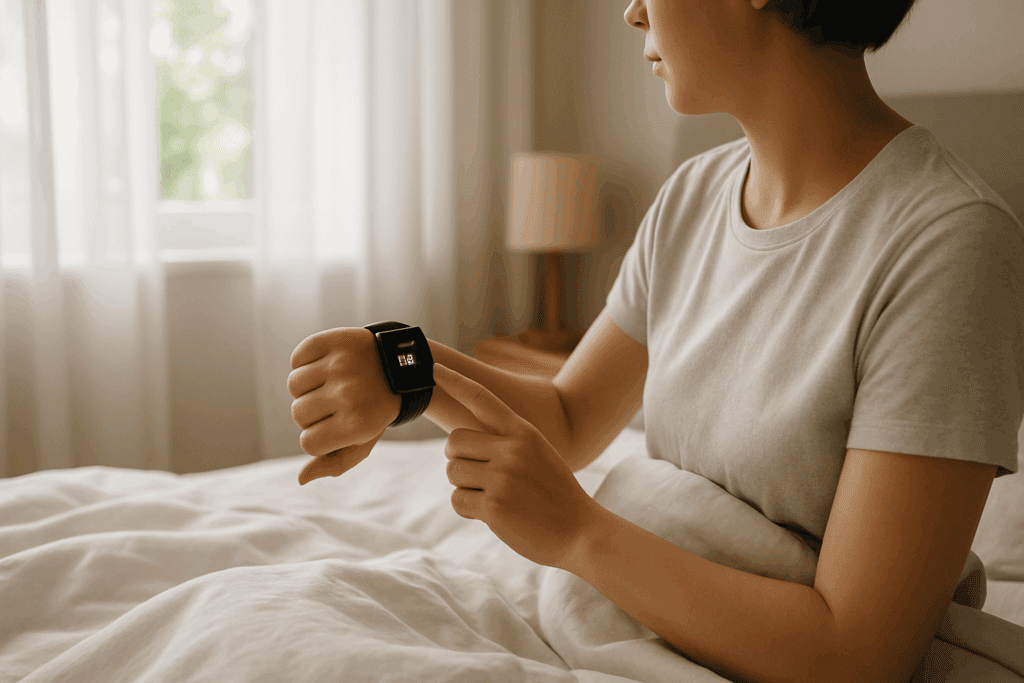
Resting Heart Rate: A Foundational Measure of Cardiac Health
One of the easiest and most informative ways to assess your heart is by monitoring your resting heart rate (RHR). This metric is typically measured first thing in the morning, while your body is still at rest. A normal RHR for adults ranges between 60 to 100 beats per minute, though trained athletes may fall lower. Knowing how to check heart health at home begins with tracking your RHR consistently over time. Significant deviations—either too high or too low—can be early indicators of cardiovascular or systemic issues.
If your RHR begins to rise without changes in activity or stress levels, it could signal inflammation, overtraining, dehydration, or underlying cardiac problems. On the other hand, an unusually low RHR accompanied by dizziness or fatigue could suggest bradycardia or issues with electrical conduction in the heart. Digital tools help you spot these trends early, especially when integrated with lifestyle factors like sleep quality, hydration, and emotional stress.
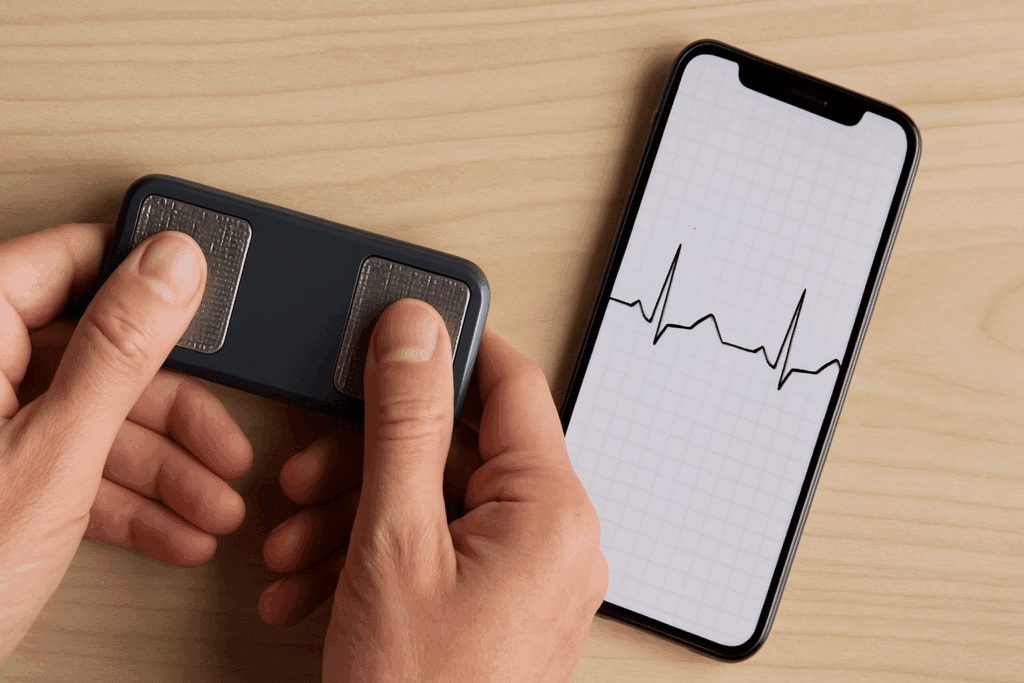
Spotting Irregular Heart Rhythms from Home
Recognizing signs of arrhythmia, or abnormal heart rhythm, is a vital part of knowing how to check for heart problems at home. Many wearables now come with ECG features capable of capturing irregularities such as atrial fibrillation (AFib), one of the most common—and potentially dangerous—types of arrhythmia. Although not diagnostic, these devices can record electrical activity and provide exportable reports for physician review.
Besides technology, physical symptoms should never be overlooked. Palpitations, a fluttering feeling in the chest, dizziness, or unexplained fatigue may all suggest abnormal rhythms. In such cases, a wearable device that confirms irregularity adds urgency to the need for professional evaluation. These symptoms might be sporadic or seem minor, but their presence warrants further assessment, especially if they become more frequent or intense.
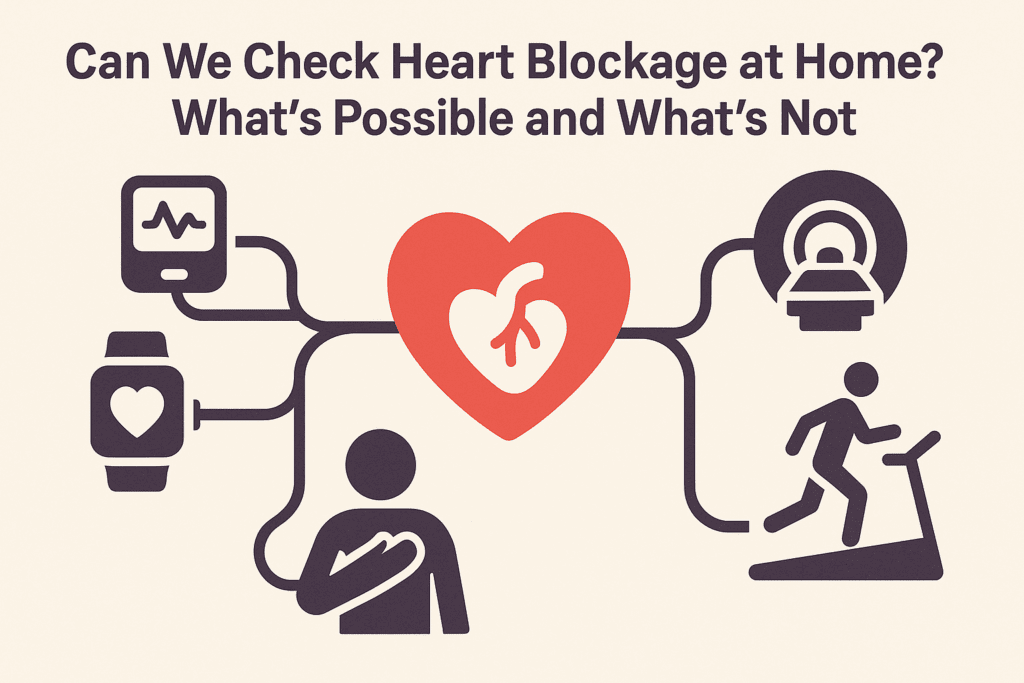
Can We Check Heart Blockage at Home? What’s Possible and What’s Not
A common question among those concerned about heart health is, can we check heart blockage at home? The answer is nuanced. There is currently no home device that can detect coronary artery blockages with the precision of a CT angiogram or stress test performed in a clinical setting. However, indirect markers and symptom monitoring can offer valuable clues.
Shortness of breath during mild activity, chest discomfort, or declining exercise capacity may indicate restricted blood flow. Fitness trackers that monitor VO2 max or cardiovascular endurance can highlight changes in output over time. While these signs don’t confirm blockage, they serve as red flags suggesting the need for further medical investigation. Regularly assessing your physical limits and paying attention to your body’s responses can help you determine whether it’s time to speak with your doctor.
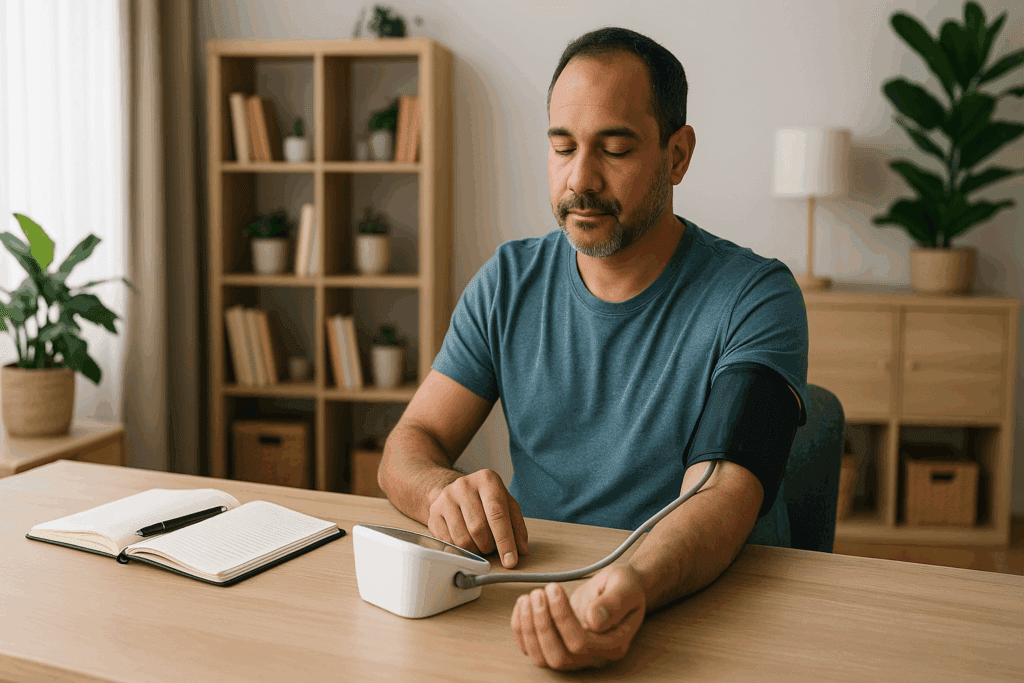
Blood Pressure: A Critical, Everyday Cardiovascular Marker
High blood pressure, or hypertension, is one of the most consistent risk factors for heart disease and stroke. Fortunately, it’s also one of the easiest markers to track at home. Digital blood pressure monitors are affordable, widely available, and clinically validated for accuracy. Learning how to check for heart disease at home should always involve blood pressure monitoring, particularly if you have a family history or existing cardiovascular concerns.
It’s best to measure your blood pressure while seated, with your back supported and your arm resting at heart level. Consistent readings above 130/80 mm Hg may indicate a need for lifestyle changes or medical attention. Chronic hypertension places strain on the arteries and forces the heart to work harder than necessary, increasing the risk of complications over time. By tracking trends and sharing them with your physician, you take a critical step in managing heart risk.

Heart Rate Variability: A Window Into Resilience and Autonomic Health
Heart rate variability (HRV) measures the time between heartbeats and reflects your autonomic nervous system’s ability to adapt to stress. A high HRV is generally associated with better cardiovascular and overall health, while a low HRV may point to poor recovery, heightened stress, or risk of disease. Devices that monitor HRV—usually during rest or sleep—can provide subtle but powerful insights.
Those wondering how to check heart health at home often overlook HRV, yet it’s one of the best indicators of systemic resilience. Monitoring HRV can help athletes fine-tune training regimens or alert anyone to the need for more rest and stress reduction. Over time, improvements in HRV can reflect better cardiovascular adaptability, while steady declines may indicate overtraining, illness, or psychological strain.
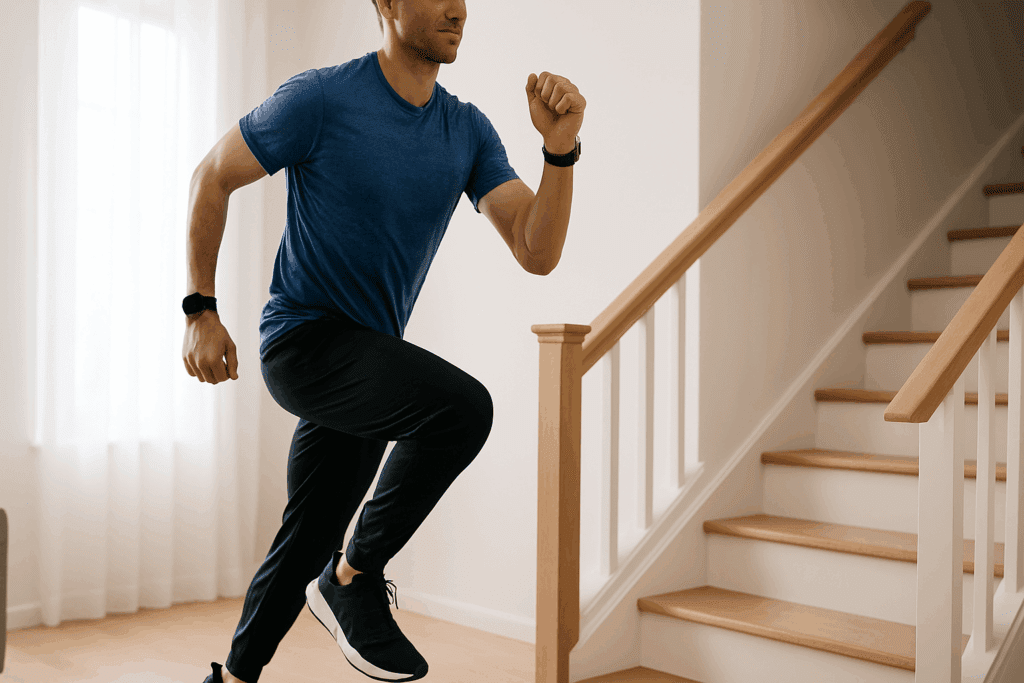
Performance-Based Indicators: Functional Tests You Can Do at Home
While digital tools provide rich data, basic functional assessments still hold great value. One example is the step test: climb stairs for one minute and measure how quickly your heart rate returns to normal. A faster recovery rate typically reflects better cardiovascular conditioning. Another option is the six-minute walk test, which assesses endurance and pulmonary function—useful for people tracking changes in stamina or shortness of breath.
Knowing how to check for heart problems at home isn’t just about numbers. It’s about recognizing changes in physical capacity. If you notice increased breathlessness during daily activities, or if your heart rate spikes unusually during minimal effort, these can be meaningful early signs. Functional tests complement biometric data, adding a tangible, lived-in dimension to heart health assessment.
The Importance of Symptom Awareness in Self-Monitoring
Technology is powerful, but your own perception of your body remains one of the most critical diagnostic tools. Recognizing when something feels “off” can be more valuable than any smartwatch alert. Chest discomfort, unusual fatigue, jaw or neck pain during exertion, and even nausea can sometimes be signs of cardiovascular stress, especially in women whose symptoms may differ from the classic presentation.
If you’re learning how to check for heart problems at home, don’t ignore your own intuition. Combine your physical sensations with measurable data to create a fuller picture. For instance, if your watch detects AFib and you’re also feeling dizzy or fatigued, this strengthens the case for immediate medical evaluation. When in doubt, it’s always safer to seek professional advice.
Can You Perform a Heart Test at Home? Yes—With Limitations
The concept of a heart test at home is becoming increasingly viable thanks to wearable ECGs, digital blood pressure cuffs, pulse oximeters, and other diagnostic tools. However, while these instruments provide valuable insight, they cannot fully replace formal cardiac testing such as echocardiograms or stress tests under clinical supervision.
Think of these tools as your daily check-ins rather than final judgments. They help you track trends and spot abnormalities but should not be the sole basis for diagnosis. What they do offer is a reliable foundation to act sooner when symptoms or readings point to risk. Shared with a doctor, these home-based tests become part of a more informed, collaborative care plan.
Lifestyle Choices That Strengthen At-Home Monitoring Efforts
No tool is more powerful than a heart-healthy lifestyle. Regular exercise, a Mediterranean-style diet, and mindfulness practices all contribute to stronger cardiovascular function. These choices don’t just improve heart health—they enhance the accuracy and usefulness of your self-monitoring tools by giving you a more stable baseline from which to detect change.
Stress is a particularly underestimated factor. Chronic stress can impair HRV, raise blood pressure, and increase inflammatory markers—all of which compromise heart health. Integrating relaxation techniques such as breathing exercises, yoga, or even nature walks can significantly improve both your subjective well-being and objective heart metrics. Self-care is not separate from heart care—it is at the very center of it.
Frequently Asked Questions: How to Monitor and Understand Heart Health from Home
1. How accurate are consumer devices for performing a heart test at home?
While no consumer-grade device can replace a comprehensive clinical evaluation, many FDA-cleared tools now offer surprisingly accurate insights when used consistently and correctly. Devices like smartwatches with ECG capabilities, digital stethoscopes, and blood pressure monitors provide real-time data that helps users understand heart rhythm trends and resting heart rate. When wondering how to check heart health at home, it’s essential to use validated products and adhere to best practices like measuring in a resting state and logging results over time. These tools serve as early indicators rather than diagnostic instruments, but their value lies in pattern recognition. Used thoughtfully, they can enhance your understanding and supplement clinical care.
2. Is it possible to perform meaningful cardiovascular assessments without any tech?
Absolutely. One of the most overlooked approaches to how to check for heart problems at home involves paying close attention to physical performance and symptoms. Functional fitness tests, like timing how long it takes your heart rate to return to normal after climbing stairs, offer excellent insight into cardiovascular efficiency. Additionally, monitoring for subtle changes in stamina, breath control, or dizziness during daily activities can be equally telling. While devices make data collection easier, being attuned to your body’s cues remains one of the most effective ways to assess potential concerns.
3. How can we check heart blockage at home without specialized imaging?
Although current at-home technologies can’t visualize coronary artery blockages like a CT angiogram or stress test, they can highlight warning signs worth investigating further. If you’re wondering whether we can check heart blockage at home, the answer lies in tracking patterns over time—such as decreased exercise tolerance, unexplained fatigue, or mild chest discomfort during physical exertion. These signals may suggest poor blood flow to the heart and warrant professional evaluation. Fitness wearables that track endurance metrics and cardiovascular load can also help you recognize deviations from your baseline performance. In the absence of imaging, your best strategy is consistent observation and immediate follow-up when red flags appear.
4. What role does mental health play in heart function, and can it be observed at home?
Mental health and cardiovascular health are deeply connected. Stress, anxiety, and poor sleep can elevate blood pressure and reduce heart rate variability, two markers you can observe when learning how to check heart health at home. Tools that measure HRV (heart rate variability) offer a window into how your body responds to mental and emotional stress. A significant drop in HRV might indicate chronic stress, which, over time, may increase your risk of hypertension or arrhythmias. Practices such as meditation and deep breathing can help mitigate these effects, and observing their impact via wearables offers practical feedback on what works for you.
5. How can family history influence how I check for heart disease at home?
Genetic predisposition plays a powerful role in cardiovascular health, especially when it comes to early-onset heart conditions. If you have a family history of heart disease, your threshold for concern should be lower, and your monitoring more diligent. This makes understanding how to check for heart disease at home even more important. You might consider tracking not only standard metrics like blood pressure and heart rate, but also incorporating lipid panels and blood glucose monitoring if prediabetes or high cholesterol are in your family history. Digital tools alone may not catch hereditary risk, but they can help you stay aware of changes that should trigger more comprehensive testing.
6. What are some overlooked tools or methods for at-home heart testing?
Many people searching for how to perform a heart test at home rely heavily on popular wearables, but there are other valuable tools as well. Pulse wave velocity meters and digital arterial stiffness monitors are emerging technologies that estimate vascular health by evaluating the speed of blood flow through arteries. Similarly, devices that assess oxygen saturation (SpO2) and even home cholesterol testing kits can round out your picture of cardiovascular health. Although these tools aren’t replacements for clinical diagnostics, they broaden the toolkit for self-assessment and support a more nuanced understanding of how your cardiovascular system is functioning.
7. Are there risks to relying too heavily on home-based monitoring?
While empowering, home testing is not foolproof. One of the potential risks in learning how to check for heart problems at home is misinterpreting data without context. False alarms can lead to unnecessary anxiety, while underestimating symptoms can delay critical care. It’s important to view home metrics as supplemental rather than definitive. Establishing communication with a healthcare provider who can interpret your data adds a layer of safety and ensures that home observations contribute to, rather than detract from, long-term heart health management.
8. What signs might suggest that I need a professional evaluation despite normal home readings?
You might be getting ideal readings from your devices but still feel “off”—a reminder that no device replaces your own intuition and physical awareness. If you experience unexplained fatigue, jaw or neck tightness, nausea during activity, or subtle but persistent changes in your ability to perform regular tasks, it’s time to see a doctor. This reinforces why knowing how to check for heart disease at home includes more than just tracking numbers; it requires understanding context. Subclinical conditions like microvascular disease or early-stage cardiomyopathy may not register on consumer tools. Any new or worsening symptom should be taken seriously, even in the absence of alarming metrics.
9. How often should I conduct a heart test at home if I have no known heart problems?
For individuals without diagnosed cardiovascular conditions, testing once a week may be sufficient, provided you’re in generally good health. However, if you’re implementing a new fitness routine or recovering from illness, more frequent checks could be beneficial. When learning how to check heart health at home, consistency is more important than frequency—watching for patterns over time rather than reacting to isolated values. That said, changes in health status, new medications, or life stressors might require more frequent monitoring. The goal is to create a long-term record that helps identify trends and guide timely action.
10. What future innovations might improve our ability to check heart health from home?
Looking ahead, the future of at-home cardiovascular care is highly promising. Wearables are becoming more sophisticated, with some companies developing sensors capable of monitoring chemical markers in sweat or even analyzing heart sounds using AI. The potential to perform a detailed heart test at home will likely expand to include blood biomarker analysis and remote ultrasound technology. These advances could transform how we approach questions like can we check heart blockage at home and how to check for heart disease at home with clinical-level precision. As these technologies mature, they will likely make comprehensive heart health assessment more accessible, accurate, and individualized than ever before.
Conclusion: Building a Smarter, Safer Relationship with Your Heart
In today’s world, knowing how to check heart health at home is not only possible—it’s essential. With a growing array of tools and a better understanding of cardiovascular indicators, individuals can now take more control over their heart health than ever before. Whether you’re wondering how to check for heart disease at home, how to check for heart problems at home, or even asking if we can check heart blockage at home, the answer is increasingly encouraging: you can do a great deal, and you can do it safely.
While no single home device can offer a definitive diagnosis, combining smart monitoring tools with symptom awareness, fitness assessments, and healthy lifestyle choices provides a comprehensive framework for cardiovascular self-care. These strategies empower you to take meaningful action early, whether that means adjusting your diet, scaling back stress, or scheduling a doctor’s appointment to investigate troubling trends. And while the answer to whether you can perform a complete heart test at home may be “not yet”—you can absolutely begin the journey of understanding your heart better, and supporting it for the long haul.
Your heart doesn’t just carry you through life—it responds to how you live. When you learn how to listen, support, and test it from home, you gain the ability to not only prevent disease but to enhance performance, stamina, and overall well-being. In a time where prevention is power, every heartbeat counts—and you have more tools than ever to make each one healthier.
Was this article helpful? Don’t let it stop with you. Share it right now with someone who needs to see it—whether it’s a friend, a colleague, or your whole network. And if staying ahead on this topic matters to you, subscribe to this publication for the most up-to-date information. You’ll get the latest insights delivered straight to you—no searching, no missing out.
Further Reading:
4 Easy Ways To Test Your Heart Health at Home

